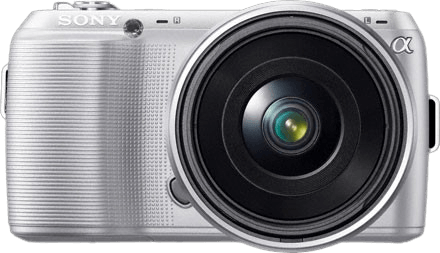Sony NEX-C3 Specs and Scores

The Sony NEX-C3 scores a 46/100 on our scale, a mirrorless camera announced on June 8, 2011. With a launch price of $770, this camera measures 110 x 60 x 33mm and weighs 225g (0.50lbs). When comparing these specifications to today’s market, the NEX-C3 is relatively compact and lightweight for its time. Although it is a decade old, the camera still offers decent features for those seeking a basic mirrorless option.
Sony NEX-C3 Overview and Optics
The optics of the Sony NEX-C3 receive a score of 50/100. This camera has a 16.2-megapixel CMOS sensor with an APS-C size, providing decent image quality. The Sony E lens mount accommodates a variety of lenses, offering flexibility for different shooting situations. However, the lack of image stabilization may result in shaky images when shooting handheld or in low light conditions.
With a Bionz processor, the NEX-C3 achieves a shooting speed of 5.5 frames per second. This speed is relatively slow compared to other cameras in today’s market. The camera has a DXOMARK score of 73 for its sensor, which is average and does not stand out among competitors.
The aspect ratio of 3:2 is standard for most cameras, providing a familiar format for photographers. Despite some shortcomings, the Sony NEX-C3’s optics perform adequately for casual photographers who prioritize affordability and simplicity over cutting-edge technology.
Sony NEX-C3 Video Performance
The Sony NEX-C3 receives a video score of 34/100. Its capabilities include a maximum video resolution of standard HD (1280 x 720) and a maximum video frame rate of 30fps. However, there is no built-in time-lapse functionality.
In today’s market, these specifications fall short compared to many other cameras, as 4K resolution and higher frame rates have become standard features. The lack of time-lapse functionality also limits the creative options for users.
The Sony NEX-C3’s video performance is not competitive with current camera offerings. Users looking for advanced video capabilities should explore other options to meet their needs.
Sony NEX-C3 Features and Benefits
The Sony NEX-C3 scores 41/100 in the features section. It has a 3-inch screen with a resolution of 920,000 dots, providing clear and detailed image previews. However, the camera lacks a touchscreen, which is a common feature in many modern cameras. The NEX-C3 compensates for this with a flip screen, allowing for flexible shooting angles.
Unfortunately, the camera does not have GPS, WIFI, or Bluetooth capabilities. These features are now considered standard in most contemporary cameras for easy geotagging and seamless photo sharing. The absence of these features makes the NEX-C3 less competitive in today’s market.
The Sony NEX-C3 offers some desirable features, such as a flip screen, but falls short in other aspects, such as connectivity options. Its feature score reflects its limited capabilities compared to modern cameras.
Sony NEX-C3 Storage and Battery
The storage and battery section of the Sony NEX-C3 scores 24 out of 100. This camera has a single memory card slot, which accepts SD, SDHC, SDXC, Memory Stick Pro Duo, and Pro-HG Duo cards. In today’s market, this range of compatibility is adequate, but multiple card slots are becoming more common in newer cameras.
With a battery life of 400 shots, the NEX-C3 utilizes the NP-FW50 battery type. This battery life is somewhat limited compared to more recent camera models, which often offer longer shooting times. Additionally, the NEX-C3 does not have USB charging capability, making it less convenient for on-the-go charging.
Taking these factors into consideration, the Sony NEX-C3’s storage and battery capabilities are modest and may not meet the demands of today’s photographers who seek more advanced options.
